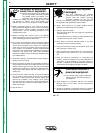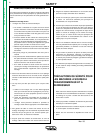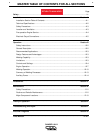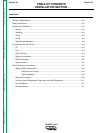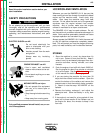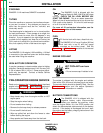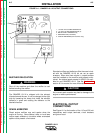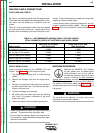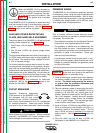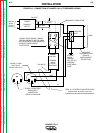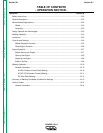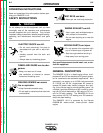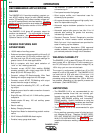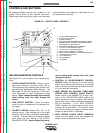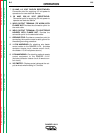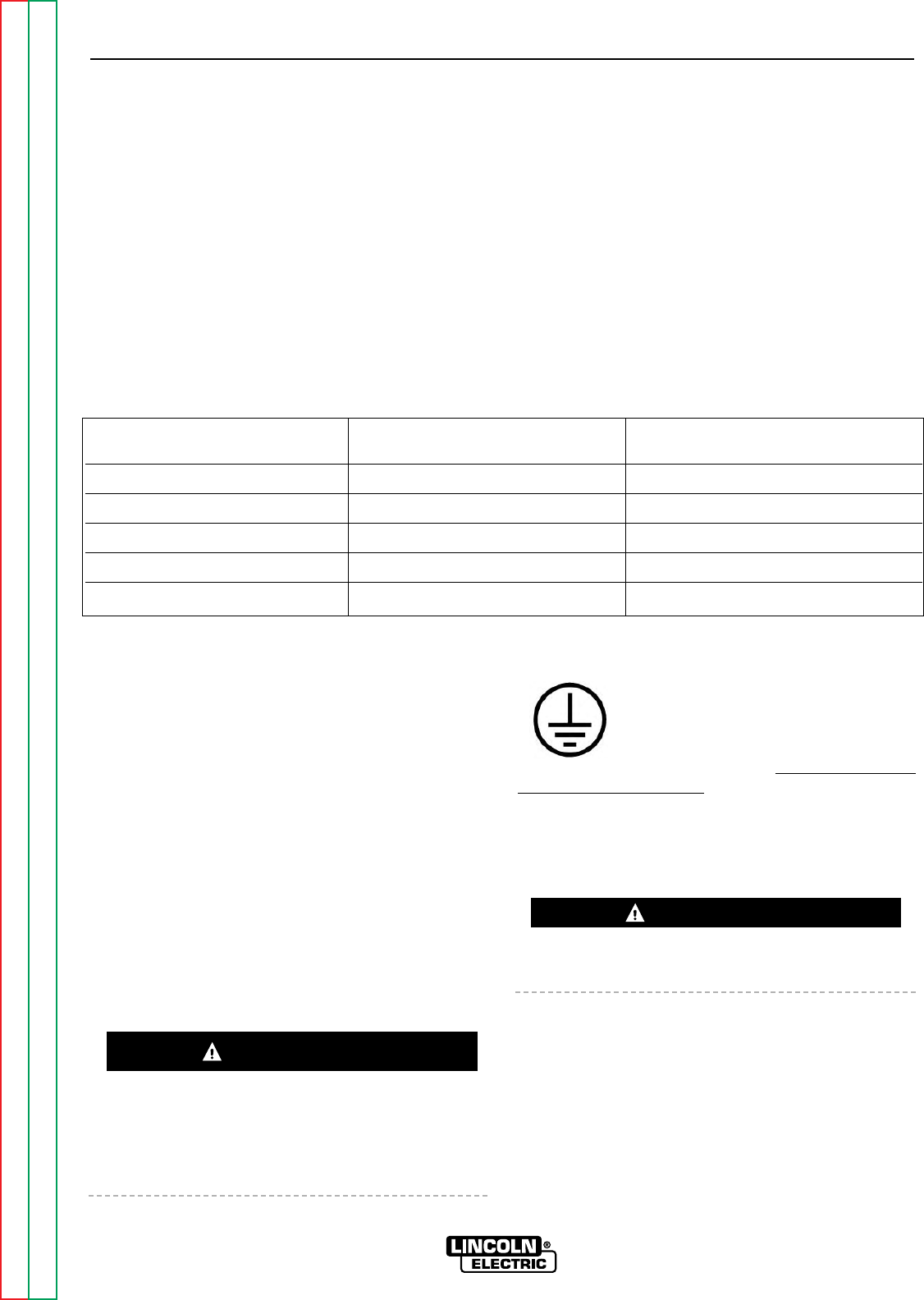
WELDING CABLE CONNECTIONS
CABLE SIZE AND LENGTH
Be sure to use welding cables that are large enough.
The correct size and length becomes especially impor-
tant when you are welding at a distance from the
welder.
Table A.1 lists recommended cable sizes and lengths
for rated current and duty cycle. Length refers to the
distance from the welder to the work and back to the
welder. Cable diameters are increased for long cable
lengths to reduce voltage drops.
Lincoln Electric offers a welding accessory kit with the
properly specified welding cables. See the Acces-
sories section of this manual for more information.
INSTALLATION
A-6 A-6
RANGER 10-LX
Return to Section TOC Return to Section TOC Return to Section TOC Return to Section TOC
Return to Master TOC Return to Master TOC Return to Master TOC Return to Master TOC
TABLE A.1 - RECOMMENDED WELDING CABLE SIZE AND LENGTH
TOTAL COMBINED LENGTH OF ELECTRODE AND WORK CABLES
Cable Size for 250 Amp Cable Size for 250 Amp
Cable Length 40% Duty Cycle 100% Duty Cycle
0-50 feet (0-15 meters) 2 AWG 1 AWG
50-100 feet (15-39 meters) 2 AWG 1 AWG
100-150 feet (30-46 meters) 1 AWG 1 AWG
150-200 feet (46-61 meters) 1 AWG 1 AWG
200-250 feet (61-76 meters) 1/0 AWG 1/0 AWG
CABLE INSTALLATION
Install the welding cables to your RANGER 10-LX as
follows. See Figure A.1 for the location of parts.
1. The diesel engine must be OFF to install welding
cables.
2. Remove the flanged nuts from the output termi-
nals.
3. Connect the electrode holder and work cables to
the weld output terminals. The terminals are iden-
tified on the case front.
4. Tighten the flanged nuts securely.
5. Be certain that the metal piece you are welding
(the “work”) is properly connected to the work
clamp and cable.
6. Check and tighten the connections periodically.
• Loose connections will cause the output terminals to
overheat. The terminals may eventually melt.
• Do not cross the welding cables at the output termi-
nal connection. Keep the cables isolated and sepa-
rate from one another.
MACHINE GROUNDING
Because the RANGER 10-LX creates
its own power from its diesel-engine
driven generator, you do not need to
connect the machine frame to an earth
ground. However, for best protection
against electrical shock, connect a heavy gauge wire
(#8 AWG or larger) from the ground stud located on
the bottom of the output panel (see Figure A.1) to a
suitable earth ground such as a metal pipe driven into
the ground.
Do not ground the machine to a pipe that carries
explosive or combustible material.
CAUTION
WARNING



